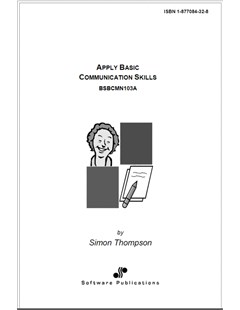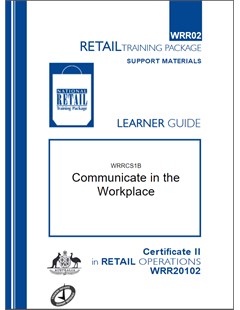Apply basic communication skills
Communication is a method by which information travels from a source – such as a mouth - to a receiver – such as an ear - and is understood as intended. This last part is important – after all, if the information isn’t understood, it hasn’t been communicated properly
2015
Communication is a method by which information travels from a source – such as a mouth - to a receiver – such as an ear - and is understood as intended. This last part is important – after all, if the information isn’t understood, it hasn’t been communicated properly.
The source and receiver might be individuals or groups. They do not need to be people, either. When my dog barks at me and brings me its lead, I understand that it wants to go for a walk. In that case, the source is the dog, and the receiver is me.Information can be a message or collection of facts. It might include, for instance, statements of opinion, instructions, questions, requests, demands, ideas, declarations or codes. Communication can take many forms...
Cats communicate with one another by meowing and purring.
Computers can communicate with each other by sending coded signals over telephone lines.
Red Indians used to communicate with each other by sending smoke signals. One Red Indian would understand what another Red Indian was saying by observing balls of smoke rising into the sky.
Ships’ captains sometimes communicate with each other using Morse Code - a series of short and long beeps that are transferred over the radio waves.
Writers communicate with their readers by putting words on paper.
Deaf people sometimes communicate using sign language.
Football supporters communicate with their teams by chanting and singing. Source Receiver Information.
Simon Thomson. Apply basic communication skills. Software Pubications, 2002.
 |  |  |
| Apply basic communication skills. | Communicate in the workplace | Cambride English for Job-hunting |
Thứ Sáu, 08:37 22/04/2022
Copyright © 2018 Hanoi University of Industry.